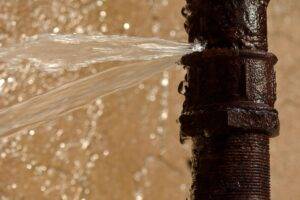Different Ideas To Repair Underground Pipes
Buried water, sewer, gas and drainage pipes endure stresses over time resulting in leaks, cracks and blockages. As per experts like The Relining Company, while major replacements are costly, various trenchless repair techniques can repair underground pipes to optimal function at lower expense.
Here are smart alternatives for fixing underground pipes without full excavation:
Cured-In-Place Pipe Lining
A flexible, resin-saturated fabric tube gets inserted into the damaged pipe then inflated to seal against the walls. UV light or steam cures the resin into a smooth, seamless new pipe lining within the old conduit. Trenches aren’t required.
Lining seals cracks, restores flow capacity, and prevents leaks. Typical applications include sewer, gas and water main repairs.
Epoxy Pipe Coating
Epoxy coatings sprayed inside pipes create a protective barrier against corrosion and cracks. The adhesive coat shields old piping from further deterioration while restoring structural stability.
Coatings extend service life at a fraction of replacement cost. Use for restoring water, gas and sewer lines.
Sectional liners composed of short polyethylene or PVC segments get inserted into the damaged portion of pipe alone. Once expanded into place, the liners interlock and harden to form a rigid sleeve strengthening compromised areas.
Unlike full lining, this targets only problem sections without limiting access to functioning sections of pipe.
Injection Sealing
Special sealants like chemical grouts, epoxy, polyurethane resins, or cementitious materials inject through drilled holes to coat the interior pipe surface. Sealants fill cracks and gaps as they harden.
Injection sealing stabilizes pipes, stops leaks, and prevents infiltration. Ideal for small leaks and voids.
Pipe Bursting
 A cone-shaped burster head attaches to a rod and pulls a new replacement pipe behind it through the old conduit. The old pipe bursts from the pressure as the new pipe takes its place. No trenches needed.
A cone-shaped burster head attaches to a rod and pulls a new replacement pipe behind it through the old conduit. The old pipe bursts from the pressure as the new pipe takes its place. No trenches needed.
This fully replaces severely deteriorated pipes while using the old line for guidance. Applies to sewer, water and gas pipes.
Slip Lining
A new smaller pipe inserts into the old damaged one like a sleeve. Annular space between the pipes fills with cement or epoxy for stability. The new lining provides a smooth waterway.
Slip lining restores structural integrity at low cost but does sacrifice some flow capacity due to smaller diameter.
Robotically Applied Coatings
Remote-controlled robotic devices operate within pipes to apply protective sealants and linings with precision. Robotic arms uniformly coat constrained and complex pipe interiors.
The robotic approach provides quality assurance in difficult to access pipes. Ideal for large diameter sewers and drains.
Manhole-to-Manhole Lining
Flexible lining tubes fed through manholes span entire sections of pipe between access points. Once expanded, the liner sleeves the conduit. Resin coats the liner to harden in place.
This approach restores long stretches of pipe without needing intervening access through excavation.
Spot Repairs
For localized pipe defects like a single fracture, small cutouts excavate just the damaged area rather than entire trenches. After repairing the isolated problem, crews backfill the access hole.
Minimally invasive spot repairs restore pipe function at the fractured location. This targets repairs.
Conclusion
Advanced diagnostics like camera inspections assess underground infrastructure integrity while revealing options for less disruptive renewal. Trenchless techniques extend pipe lifespan without excavating up streets or grounds unnecessarily. The right solution depends on pipe type, size, access and budget. Work with professional engineers to match the ideal repair method to your needs.



8 Comments
heather
I will have to save this one for a winter reminder. I will have to remember to leave the kitchen sink dripping thanks for the great advice.
I commented on this post but that was a different giveaway.
Elizabeth
Home repairs are driving me crazy, frozen pipes would be the kicker!
heather
This was very informative to read and I learned some things that I did not know before. We sometimes have problems with our pipes during the cold winter months.
Connie: The Head Peanut
Heather, we learned the hard way this last winter. ALWAYS leave the kitchen sink dripping. YIKES!! No water in the kitchen is a nightmare.
Sue E
I would get a headache trying to find a leak or try to fix a pipe! These pipes have to be kept up! Mold can make your family sick. A hole in a water pipe can make your water bill go up! Being a homeowner is a huge responsibility!!
Tamra Phelps
Oh boy, that’s every home owners nightmare, isn’t it? Underground pipes that have burst or are leaking. Any option that doesn’t involve spending every dime you have is good!
l p
owning a home is complex so it’s nice to have such information. thanks
gloria patterson
Sounds like a lot of good information here. I am from a mixed family of skills. My brother was a plumber and when he retired my nephew took over the job. He is very good at his job and it is great to have a plumber in the family. My sister in law called him to come in and check out a problem at ther mothers home. Turns out tree roots in the pipes. He fixed and would not take any money so she made him take gift certificates to the bar for food. He loves her fried wings.